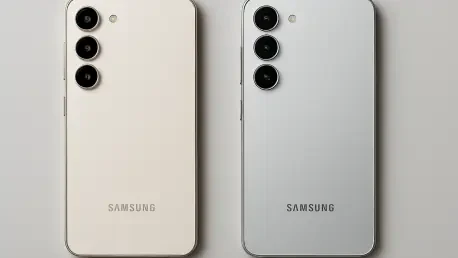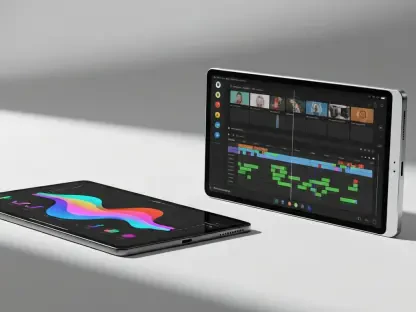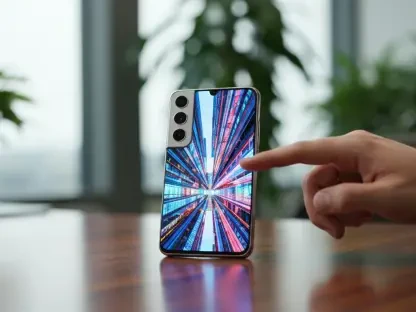In the ever-evolving smartphone landscape, Samsung continues to push boundaries with its flagship Galaxy S series, captivating tech enthusiasts worldwide with innovative designs and features. Imagine a scenario where two powerhouse devices, released in quick succession, vie for consumer attention with cutting-edge technology and strategic pricing. The Galaxy S24, initially launched with the Exynos 2400 chipset in markets like India, made headlines with a surprising re-release featuring the Snapdragon 8 Gen 3 processor, catering to a demand for enhanced performance. This move sparked debates about value and timing in a highly competitive market.
Following closely, the Galaxy S25 emerged as Samsung’s latest flagship, boasting the advanced Snapdragon 8 Elite chipset and setting a new benchmark for innovation. Comparing these two models becomes essential, especially in regions like India, where pricing strategies during sales events and chipset preferences significantly influence buyer decisions. The contrast between Exynos and Snapdragon variants has long been a deciding factor for many, shaping perceptions of performance and reliability.
This analysis delves into Samsung’s chipset strategies, exploring how the shift to Snapdragon in the S24 re-release addresses past criticisms while positioning itself against the superior hardware of the S25. The discussion aims to provide clarity on which device offers the best balance of technology and cost, reflecting on market dynamics and consumer priorities in a landscape where every upgrade counts.
Head-to-Head Comparison: Key Features and Specifications
Processor and Performance
At the heart of the Galaxy S24’s re-release lies the Snapdragon 8 Gen 3 processor, an overclocked “for Galaxy” variant that marks a significant shift from its initial Exynos 2400 configuration in markets like India. This change responds to consumer feedback about performance disparities, aiming to deliver smoother multitasking and enhanced efficiency. The chipset brings notable improvements in speed and power management compared to its predecessor, appealing to users seeking a premium experience.
In contrast, the Galaxy S25 steps up with the Snapdragon 8 Elite chipset, also an overclocked “for Galaxy” version, designed to push boundaries in processing power and gaming capabilities. Benchmark tests suggest a clear edge over the S24’s hardware, with better thermal management and faster response times, positioning it as a forward-looking choice for tech-savvy individuals. This leap in technology underscores Samsung’s focus on maintaining a competitive lead in flagship offerings.
While the S24’s chipset upgrade is a welcome revision, its relevance dims when pitted against the S25’s superior silicon. The newer model promises not just incremental gains but a substantial boost in performance metrics, raising questions about whether the re-released S24 can truly stand as a viable alternative for power users or gamers in today’s fast-paced digital environment.
Pricing and Value Proposition
Price remains a critical factor in the smartphone arena, and both devices present intriguing propositions during sales events like Flipkart’s Big Billion Days in India. The Snapdragon-powered Galaxy S24 is priced at ₹75,000 for the 8/128GB variant and ₹80,000 for the 8/256GB option, aligning closely with its original launch figures. This positioning attempts to attract budget-conscious buyers who prioritize a trusted chipset over newer models.
Meanwhile, the Galaxy S25, available at ₹75,000 for the 12/256GB configuration during similar sales, offers more RAM and storage at a comparable cost. This aggressive pricing strategy challenges the S24’s appeal, as consumers receive enhanced specifications without a significant financial stretch. The disparity in memory configurations highlights a stark difference in perceived value between these two flagships.
Ultimately, the S25 seems to overshadow the S24’s re-release by delivering better specs for nearly identical pricing during promotional periods. While the S24 might appeal to a niche audience loyal to Snapdragon at a lower storage tier, the newer model’s overall package raises doubts about the older device’s competitiveness in a market driven by innovation and cost-effectiveness.
Software and Model Distinctions
Software experience plays a pivotal role in user satisfaction, and the re-released Galaxy S24 comes equipped with Android 15 out of the box, a step ahead of its original version, which launched on Android 14. This update ensures access to the latest features and security enhancements from day one, aligning it with current standards. The distinction in software versions reflects Samsung’s intent to refresh the S24’s appeal for modern buyers.
Similarly, the Galaxy S25 is expected to ship with Android 15, maintaining parity in terms of initial software offerings. However, model number differences—SM-S921E for the Snapdragon S24 versus SM-S921B for the Exynos S24—introduce potential variations in regional support or compatibility, which could affect long-term usability. Consumers must consider these nuances when evaluating after-sales service or software update cycles.
These distinctions impact perceptions of both devices, with the S25 benefiting from being the latest iteration, likely to receive prolonged update support. The re-released S24, despite its updated software, risks being seen as a transitional model, potentially affecting consumer confidence in its longevity compared to the newer flagship’s forward-looking design and ecosystem integration.
Challenges and Limitations of Each Model
The timing of the Galaxy S24 Snapdragon re-release in India raises significant questions, particularly with the S25 available at a comparable price on platforms like Flipkart. Launching an updated variant of an older model so close to a new flagship’s debut may confuse buyers and dilute brand focus. This strategy appears misaligned with market expectations, where novelty often drives purchasing decisions.
Further complicating matters is Samsung India’s lack of official communication regarding the Snapdragon variant, as it remains absent from their website. This opacity fosters uncertainty among potential buyers who rely on verified sources for product information, risking trust in the re-release’s authenticity or support framework. Clear messaging could mitigate such concerns, but its absence stands as a notable drawback.
Additionally, the selective chipset switch—applied only to the S24 and not the S24+—limits options for consumers seeking Snapdragon alternatives across the lineup. While the S24 offers a niche appeal, its outdated hardware in other areas compared to the S25, alongside potential pricing disparities for the S25 outside sales, presents trade-offs. Each model carries unique limitations, from relevance to accessibility, that buyers must weigh carefully.
Conclusion: Which Galaxy Should You Choose?
Looking back, the comparison between the Galaxy S24 Snapdragon variant and the Galaxy S25 revealed stark contrasts in processor performance, pricing strategies, software alignment, and overall value. The S24’s re-release aimed to address chipset preferences but struggled to carve a distinct space with the S25’s superior specifications looming large at similar costs. Samsung’s strategy with the older model’s update appeared to be a reactive measure, yet it fell short of justifying its market position against a more advanced contender.
Moving forward, consumers are encouraged to prioritize future-proofing by leaning toward the S25, which offers enhanced hardware and memory for comparable pricing during sales. For those intrigued by the S24, exploring its niche appeal as a Snapdragon device during promotional discounts could be a viable path, provided official support concerns are addressed. The key takeaway is to delve deeper into long-term value, weighing update cycles and regional compatibility before committing to a purchase.
Beyond individual choice, this scenario underscores a broader need for transparency in manufacturer communications and strategic releases. Buyers are advised to stay informed through trusted platforms and compare real-time offers to maximize investment in flagship technology. Navigating such decisions requires balancing immediate needs with the evolving landscape of smartphone advancements, ensuring alignment with personal and practical priorities.









